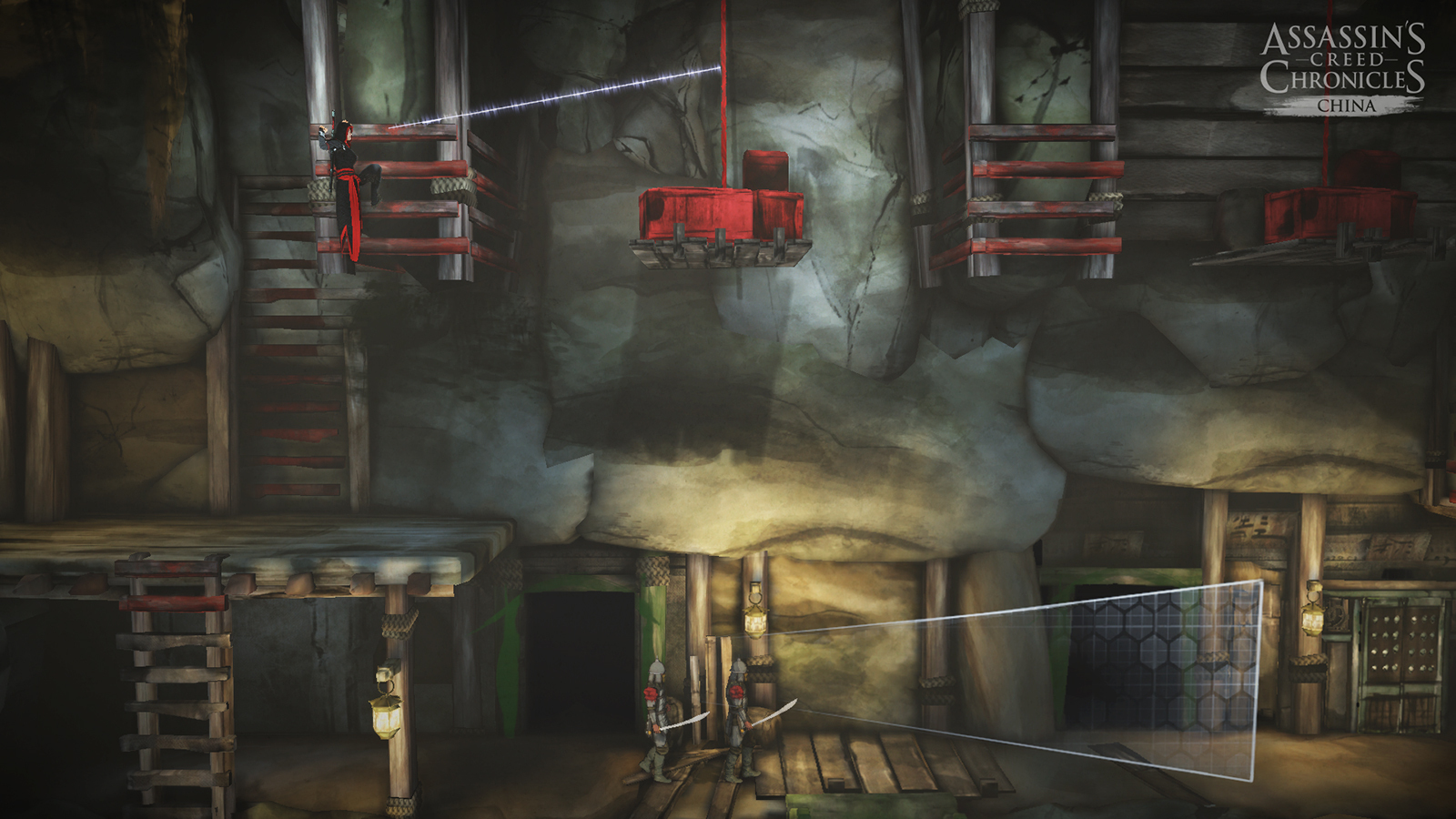Assassin’s Creed Chronicles review
Side-scroll across history with these enjoyable but shallow Assassin’s Creed spin-offs

Oh, Ubisoft, what a tangled web you weave. With every new Assassin’s Creed game released, the series’ overarching plot becomes more and more impenetrable. Nowadays, there are more tangled storylines at play in AC than your average George R. R. Martin epic.
It’s a little mentally exhausting to keep track of what’s going on, which is why the Assassin’s Creed: Chronicles compilation of three spin-off games (India, China and Russia) stands out as a breath of fresh air. The spawn of Climax Studios, its platform levels and much shorter play times serve as a welcome palette cleanser between last year’s excellent Syndicate and its future sucessor.
Granted, Chronicles isn’t a groundbreaking affair, but it’s good fun for fans of the series.
Damn, these games are pretty

Assassin’s Creed: Chronicles takes place across three episodes, the first follows Shao Jun in 16th century China, the second Arbaaz Mir 19th century India, and the third Nikolai Orelov in 20th century Russia. Although the three titles are visually similar in terms of gameplay style, their art styles, inspired by their geographical and historical settings, really make them stand apart from each other.
Shao Jun’s adventure is visually similar to Chinese bamboo paintings with a soft colour palette and brush stroke effects. India makes much greater use of colour with incredibly vibrant settings that feature rich jewel tones and henna patterns. Russia is something different again, taking inspiration from Soviet propaganda with monochromatic foregrounds brightened by bold revolutionary red backdrops.
This comic noir meets the Iron Curtain vibe was by far my favourite, and is the closest you’ll ever get to acting like a KGB agent gone rogue. For the revolution, of course.
Sneak mode engaged and enforced

Though they all look different, the Chronicles games largely share the same mechanics and gameplay. Most significantly, they double down on the stealth and freerunning aspects of the Assassin’s Creed series, which work well with the side-scrolling platformer style.
There’s a huge focus on not being spotted at all in the Chronicles games and most levels play like environmental stealth puzzles, where you work your way through guard-infested areas. To do so you have to hide in bushes, behind pillars, and create distractions to avoid the gaze of enemies. The range of their gaze is always clearly indicated, so you never feel you’ve been unfairly or impossibly spotted.
You have the option to knock enemies out or permanently put them to sleep with trusty Hidden Blade before dragging them into the shadows. Depending on whether you’re a kind-hearted assassin or, in my case, not.
Stealthing your way through guard-infested levels can become a little tiresome, especially when you’ve been hiding behind the same pillar for what feels like an age waiting for a guard’s walking pattern to reveal itself. Thankfully, these sections are frequently broken up by faster paced free running levels where you’ll have to move quickly through a dangerous obstacle course or keep on the tail of an important assassination target.
Triumphant return to form › Assassin’s Creed Syndicate review
Park-phwoar

These sections work particularly well, partly because character movement is so smooth and flowing and the mechanics are simple. Chronicles manages to avoid the control issues that the free-roaming Assassin’s Creed games suffer because you’re not running around a 3D space.
That said, pushing the joystick a little too hard can send you flying out of a hiding spot like you’re surprising a guard for his birthday. Mistakes like this definitely don’t end in cake.
It’s because of these features that, Chronicles made me feel like a genuine assassin whose success was dependent on being agile and invisible. Rather than a cloaked individual who can happily stumble through through busy rooms, killing everyone in sight without consequence.
Stealth is essential

This focus on stealth isn’t really optional, though. Though you can engage in traditional melee combat, it only takes two or three hits for you to be killed and the combat itself is clumsy and awkward, starving the experience of fun. Most of the time when I was accidentally drawn into a fight I allowed myself to be killed and so that I could start the sequence again.
The score system across the games also deters you from engaging in combat by giving you points based on how gracefully you perform a mission. These points then awkwardly determine the upgrades you receive. Failing to embrace your inner Rudolf Abel means won’t be able unlock certain items, and future missions are made unnecessarily challenging.
The aliens have landed › XCOM 2 review
Eat the narrative porridge

A sharp contrast between Chronicles and the main Assassin’s Creed titles is in their approach to stories and characters. In the main titles it’s a lot of fun feeling like you’re getting to know the protagonist you’re playing and watching them grow, perhaps seeing them play a part in notable points in history. But that’s a luxury of being a high budget and open world game.
Chronicles uses its geographical and historical settings to determine what style and colour of paint the game will be daubed in, and never delves deeper into its surroundings than that. As someone who loves Assassin’s Creed for its more historical aspects this is disappointing.
Assassin’s Creed India in particular is set during a tense, violent and important point in colonial history; the game could have delved into it with great effect, creating tensions between Arbaaz’s understanding of himself as an assassin and as Indian. Instead he’s stealing the Kho-i-Noor diamond and falling in love with a princess – tropes that could happen in any game but feel particularly unsatisfying here.
You could stand being fed narrative porridge if it was at least flavoured with interesting characters, but it’s not. You don’t learn much about Shao Jun, Arbaaz or Nikolai, hearing from them in short and sometimes questionably voice acted cut scenes. Their characters don’t really develop and you get the impression they have fewer dimensions than the game they star in.
Assassin’s Creed Chronicles Verdict

So casual admirers of the Assassin’s Creed franchise are best off sticking to its big, blockbuster installments. It’s there where you’ll find huge explorable environments, developed characters and stories that delve reasonably into their historical setting. For anyone who appreciates stealth, beautiful visuals and more contained to-the-point gameplay, Chronicles is absolutely worth picking up for a smart twist on a familiar series.
Gaming greats › The top 10 console games right now
Stuff Says…
A bit of a puddle, Assassin’s Creed: Chronicles is shallow but extremely fun to jump around in
Good Stuff
Stunning art style
Flowing character movements
Smartly twists the AC formula
Bad Stuff
Poor character development
Direct combat is a death sentence
Points system is punishing



